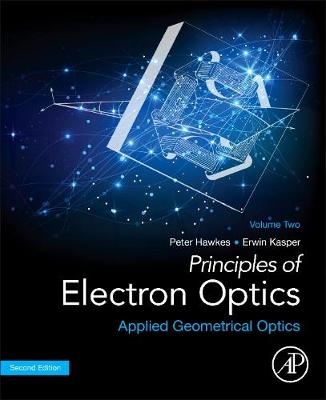
Principles of Electron Optics, Volume 2
Academic Press Inc (Verlag)
978-0-12-813369-9 (ISBN)
The lists of references include many articles that will enable the reader to go deeper into the subjects discussed in the text.
The book is intended for postgraduate students and teachers in physics and electron optics, as well as researchers and scientists in academia and industry working in the field of electron optics, electron and ion microscopy and nanolithography.
Peter Hawkes obtained his M.A. and Ph.D (and later, Sc.D.) from the University of Cambridge, where he subsequently held Fellowships of Peterhouse and of Churchill College. From 1959 – 1975, he worked in the electron microscope section of the Cavendish Laboratory in Cambridge, after which he joined the CNRS Laboratory of Electron Optics in Toulouse, of which he was Director in 1987. He was Founder-President of the European Microscopy Society and is a Fellow of the Microscopy and Optical Societies of America. He is a member of the editorial boards of several microscopy journals and serial editor of Advances in Electron Optics. Erwin Kasper studied physics at the Universities of Münster and Tübingen (Germany), where he obtained his PhD in 1965 and the habilitation to teach physics in 1969. After scientific spells in the University of Tucson, Arizona (1966) and in Munich (1970), he resumed his research and teaching in the Institute of Applied Physics, University of Tübingen, where he was later appointed professor. He lectured on general physics and especially on electron optics. The subject of his research was theoretical electron optics and related numerical methods on which he published numerous papers. After his retirement in 1997, he published a book on numerical field calculation (2001).
PART VII – INSTRUMENTAL OPTICS 35. Electrostatic Lenses 36. Magnetic Lenses 37. Electron Mirrors, Low-energy-electron Microscopes and Photoemission Electron Microscopes, Cathode Lenses and Field-emisssion Microscopy 38. The Wien Filter 39. Quadrupole Lenses 40. Deflection Systems
PART VIII – ABERRATION CORRECTION AND BEAM INTENSITY DISTRIBUTION (CAUSTICS) 41. Aberration Correction 42. Caustics and their Applications
PART IX – ELECTRON GUNS 43. General Features of Electron Guns 44. Theory of Electron Emission 45. Pointed Cathodes without Space Charge 46. Space Charge Effects 47. Brightness 48. Emittance 49. Gun optics 50. Complete Electron Guns
PART X – SYSTEMS WITH A CURVED OPTIC AXIS 51. General Curvilinear Systems 52. Magnetic Sector Fields 53. Unified Theories of Ion Optical Systems
| Erscheinungsdatum | 18.12.2017 |
|---|---|
| Verlagsort | San Diego |
| Sprache | englisch |
| Maße | 191 x 235 mm |
| Gewicht | 20 g |
| Themenwelt | Naturwissenschaften ► Physik / Astronomie ► Elektrodynamik |
| Naturwissenschaften ► Physik / Astronomie ► Festkörperphysik | |
| Naturwissenschaften ► Physik / Astronomie ► Optik | |
| ISBN-10 | 0-12-813369-4 / 0128133694 |
| ISBN-13 | 978-0-12-813369-9 / 9780128133699 |
| Zustand | Neuware |
| Haben Sie eine Frage zum Produkt? |
aus dem Bereich


